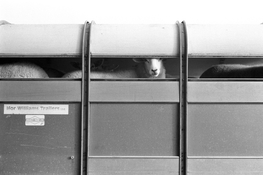Suboptimal, yes, but not outrageously bad. The question is where the most improvement is to be gained - in the negative or the scan.
Btw, I also use a Minolta 3200 dpi scanner, so I'm familiar with that kind of output. I'll try to dig something up, maybe.
Edit: OK, here's some junk I pulled from my hard drive, scanned with an old Minolta Scan Dual IV. Ignore the dust.
Full frame 35mm:
100% crop:
(Kodak Vision3 250D, so let's say 'moderately fine grain')
Had to dig a little deeper for B&W...full frame 35mm:
100% crop:
Fomapan 100 in Moersch Finol; I think I shot this with a Tamron 17-35, which isn't exactly the sharpest pencil in the box at all times (this was on one of its better days).
Subjectively I'd say these are a little better than the example in #7, BUT: subject matter, film choice, taking lens and shooting conditions make a lot of difference. I heartily admit that I find it difficult to point out which part of the difference is exactly due to which factor. Which would put us back at boring test charts again!




 .)
.)




